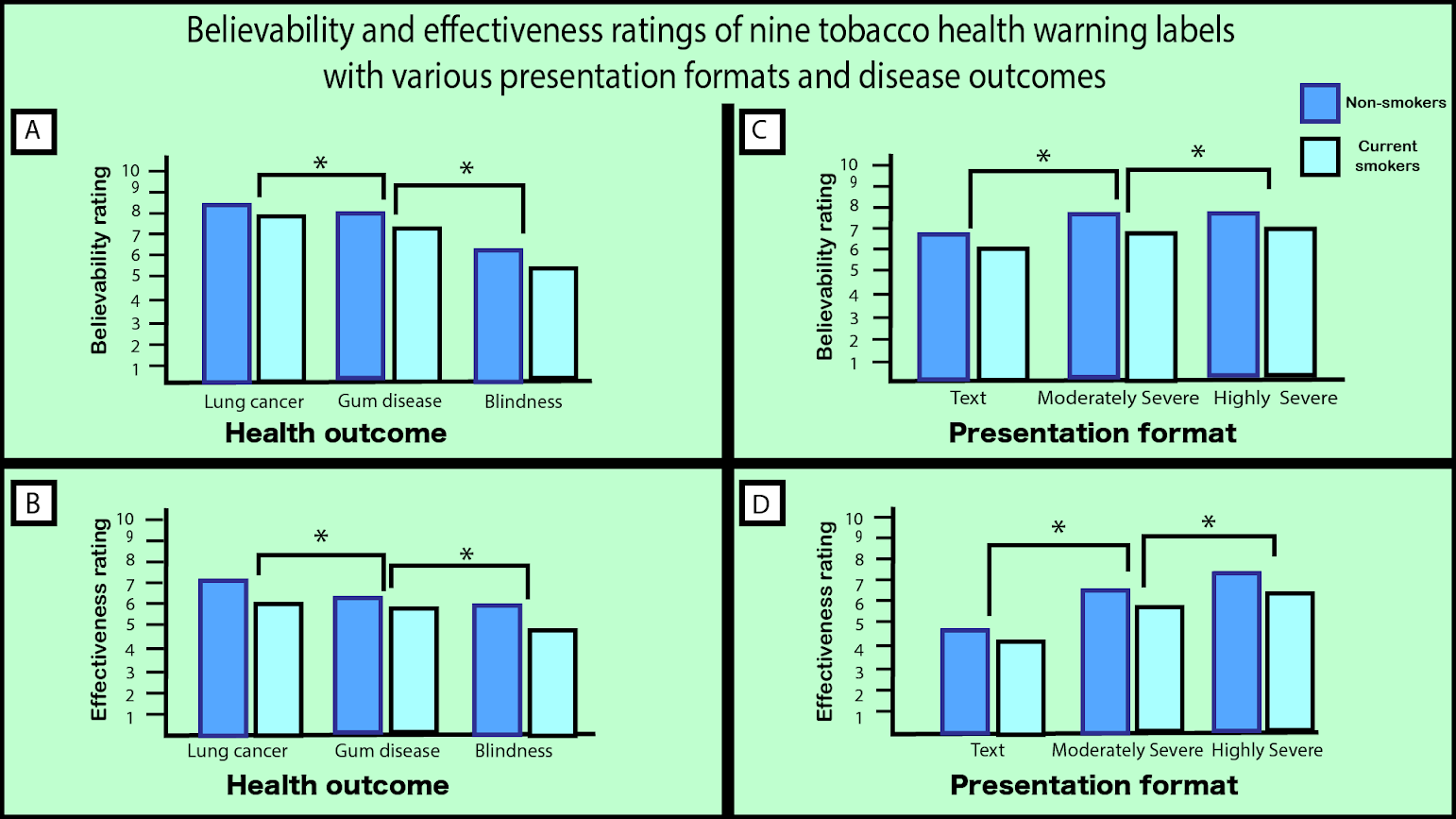Today’s review is part of our month-long special series, Open Science Practices in Addiction Research. During this special series, The BASIS features recent publications that have used contemporary open science practices.
Text-only health warnings have appeared on cigarettes for over 35 years in the United States. Despite these warnings, smoking still causes over 480,000 deaths each year in the United States. To reduce smoking and its associated health impacts, the United States Food and Drug Association recently proposed the inclusion of 13 different graphic warning images with accompanying text that depict some of the negative health consequences of smoking on cigarette packaging. The Food and Drug Administration’s proposal raises the question of whether graphic images are more effective than text-only messages at preventing or reducing smoking. This week, ASHES reviews an article, available online through open access, by Olivia Maynard and her colleagues that looked at how effective tobacco health warning labels with graphic health images are at preventing smoking.
What was the research question?
Which types of tobacco health warning labels are most believable and effective in changing smoking attitudes and behaviors?
What did the researchers do?
Researchers recruited 873 smokers and non-smokers to rate the believability and effectiveness of nine different tobacco health warning labels. There were three variations of the way the message was presented: (1) text only, (2) text along with a moderately severe image, and (3) text along with a highly severe image. The labels also focused on one of three different health consequences: (1) lung cancer, (2) blindness and (3) teeth or gum damage. In addition to rating perceived believability and effectiveness, participants rated how susceptible they generally felt they were to getting each of the health outcomes presented in the health warning labels. The authors completed ANOVA analyses to understand how variations in health warning label presentation and smoking status impacted the believability and effectiveness of the health warning label. In addition, they completed an ANOVA analysis to examine the impact of smoking status and type of health outcomes on perceived susceptibility to the disease. The authors contributed to the open science movement by making this article available online through open access, by pre-registering their protocol on the Open Science Framework, and by making their data available by request online through the Bristol Research Data Repository. In addition, each draft the authors submitted for peer review and all reviewer comments were made available online to the public.
What did they find?
Across all warning labels presented, smokers felt that the labels were less believable and effective at changing smoking attitudes and behaviors compared to non-smokers. The figure shows that warning labels for lung cancer were most believable and effective, while warning labels for blindness were least believable and effective (See panels A and B in figure) Additionally, among all participants, the more severe smoking images were seen as more believable and effective than the moderately severe images, and the moderately severe images were more believable and effective than text alone (See panels C and D in figure). Participants also felt that they were more susceptible to getting tooth and gum disease compared to lung cancer, and were more susceptible to lung cancer than to blindness. Ratings of susceptibility for each disease were positively correlated with the ratings of effectiveness and believability of health warning labels for that disease. However, this relationship was statistically significant only among smokers.
 Figure. Average ratings of the believability and effectiveness of nine tobacco health warning labels with three different presentation formats and three different health outcomes. Asterisks represent statistically significant differences. Figure adapted from Maynard et al. Click image to enlarge.
Figure. Average ratings of the believability and effectiveness of nine tobacco health warning labels with three different presentation formats and three different health outcomes. Asterisks represent statistically significant differences. Figure adapted from Maynard et al. Click image to enlarge.
Why do these findings matter?
Smoking still remains the leading cause of preventable deaths in the United States. Consequently, it is important to understand which health warning labels will be most believable and effective in changing smoking attitudes and behaviors. This study provides initial evidence that severe, graphic images of diseases might be an effective way to change people’s attitudes towards smoking and the potential associated health consequences. However, future research is needed to build off of these findings in order to understand how health warning labels can actually impact smoking behaviors not just attitudes.
Every study has limitations. What are the limitations of this study?
The researchers used convenience sampling to recruit participants, which means that their sample might not be an accurate representation of the general population. In addition, participants rated susceptibility to disease after viewing the health warning labels, so the researchers could not obtain independent information on how susceptible people feel they are to getting each of the diseases in general. This study also did not include any behavioral measures of smoking behaviors before and after viewing health warning labels to back up the self-report data.
For more information:
SmokeFree offers tools and tips quitting and maintaining abstinence from smoking tobacco. The Centers for Disease Control and Prevention also provides research and tips about cigarettes and how to quit. For more details about addiction, visit our Addiction Resources page.
— Alessandra Grossman
What do you think? Please use the comment link below to provide feedback on this article.




